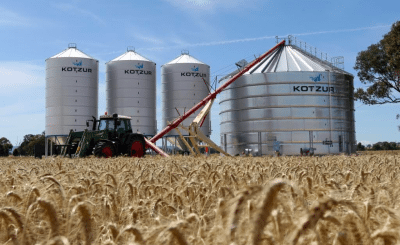DWINDLING seasonal prospects drove higher prices in eastern Australia this past week in the feed ingredients sector as animal feeders extended their cover, booking prices $10/tonne to $20/t higher than might have dealt a fortnight ago.
“We just keep putting fuel on the fire,” Delta Grain Marketing broker Tom Vanzella said.
Traders told Grain Central cottonseed values jumped as much as $45/t since the beginning of last week.
“Cottonseed values were sharply higher over the past two weeks on drought demand and firming grain prices,” Woodside Commodities manager Hamish Steele-Park said.
Cottonseed offers free on truck Murrumbidgee Irrigation Area (MIA) gins August were quoted $360/t. The Moree, Namoi Valley gin offer price was quoted $410/t.
“There is no export demand at these prices.”
Feeding animals is an expensive business in times of deepening drought. The pressure this week was particularly on southern producers buying grain, hay and pelletised milling products. Farm Tender online broker Dwain Duxson said wheat prices in southern NSW were up about $10/t since last week.
“Millers are selling a lot of pellets out of Victoria to livestock consumers.
“There’s renewed interest in hay trade at higher prices this past couple of weeks. Sellers are taking advantage of the higher price of hay which is trading above $300/t for vetch or under $300/t for cereal hay.
Port Kembla wheat hits high
Current crop and new crop grain prices have come together this week as fear of the deteriorating spring/summer harvest deepened.
On Wednesday this week Port Kembla wheat reached an historically high price of A$390/t, although the markets in northern NSW and southern Queensland did not show the same extent of price rises.
“The northern market was capped for about six weeks by the amount of grain coming from the south,” Mr Vanzella said.
“It has been sitting at around the $405-$410/t level.
“The offers are starting to dry up which could cause that run in price to go another leg,” he said.
“Consumers have done reasonably well to cover themselves with the amount of grain offloaded in Brisbane and the quantities brought by road and rail into sites like Moree.
“However, planning for a harvest in November and watching the situation becoming tighter may lead to the need for grain to continue to move around to Brisbane over the next 12 months.
“Old and new crop F1 barley went to parity in the past week; the spread narrowed to zero.
This is likely to encourage grain to be shipped around in the medium term.
“We have seen the inverse disappear out of new season markets,” Norco Toowoomba-based trader Mark Best said.
“We have seen ASX trade higher this week, on the southern and Port Kembla markets strengthening. The northern NSW, Southern Queensland markets in drought conditions are linked virtually dollar-for-dollar to those southern markets based on imports or transhipments.
“The continuing dry in the northern producing areas of both South Australia and Victoria has brought a lack of depth on the offer side and seems to be of enough concern to see values lift.”
The outlook is relatively brighter for a farm supplies business operating in a seasonally safer region of Australia, near the Victoria/New South Wales border twin cities of Albury/Wodonga.
“While farmers in this region are a bit better placed to expect a reasonable crop to harvest, crops still have quite a way to go because some were delayed by late arrival of rain at planting,” Blair’s Produce director Sean Blair said.
Mr Blair said he was expecting a reduced outlook for canola, which could work in favour of growers who decided to plant barley, for which prices were more attractive than the previous year at planting time.
………………………………………………………………………………………………………………………………………………..
| ASW wheat | Feed barley | Cottonseed | |
| Delivered Darling Downs | $410-$415 | $410-$420 | $430 |
| Delivered MIA | $350 | $350-$355 | $380 |
………………………………………………………………………………………………………………………………………………..
Grain Central: Get our free daily cropping news straight to your inbox – Click here


HAVE YOUR SAY